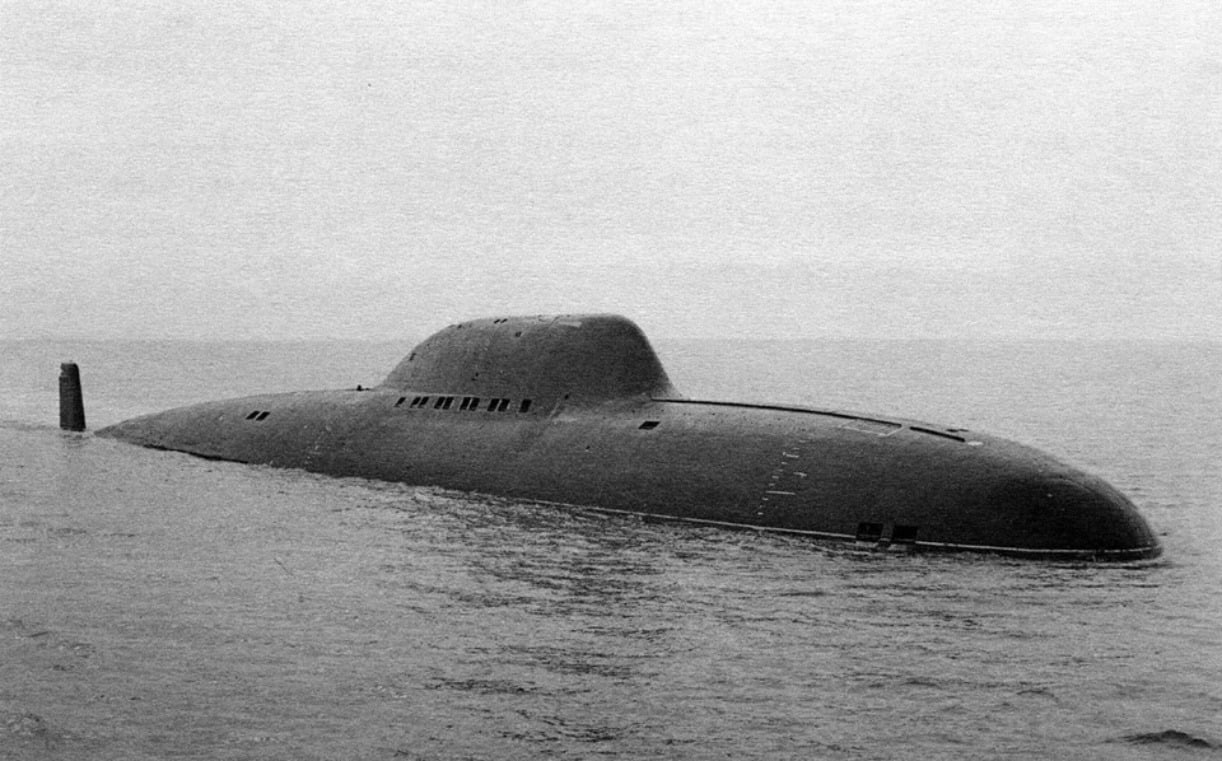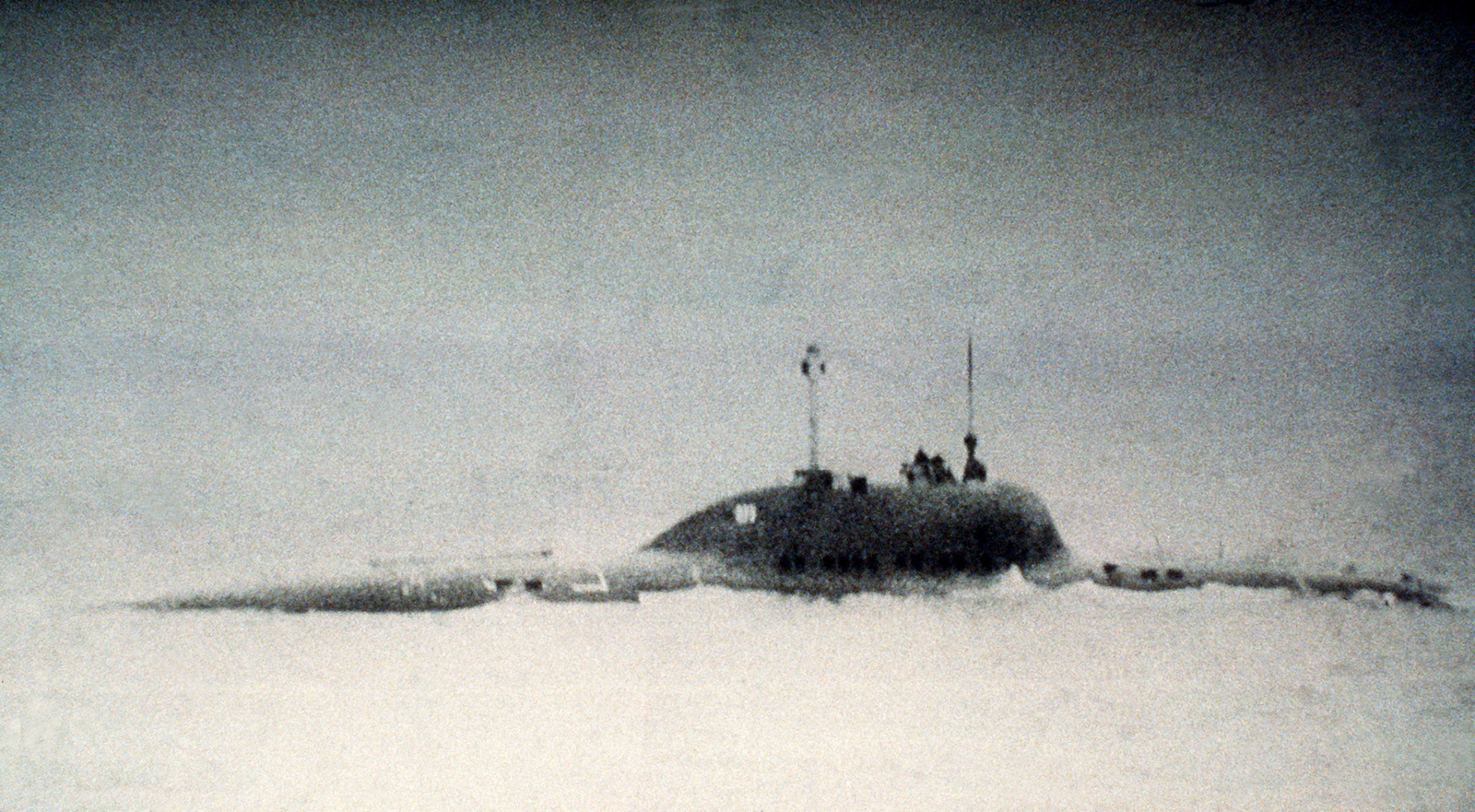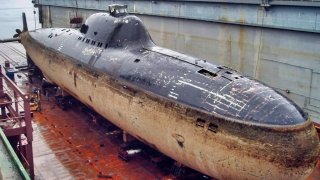Alfa-Class: Russia's Titanium Submarine That America Never Could Match
The Soviet Alfa-class submarine, featured in Tom Clancy's The Hunt for Red October, was a technological marvel during the Cold War. With a titanium hull, it could dive deeper and move faster than its contemporaries, making it a threat to NATO forces.
What You Need to Know: The Soviet Alfa-class submarine, featured in Tom Clancy's The Hunt for Red October, was a technological marvel during the Cold War. With a titanium hull, it could dive deeper and move faster than its contemporaries, making it a threat to NATO forces.

-Titanium gave the sub advantages like corrosion resistance and reduced magnetic detection, but it was expensive and difficult to work with.
-The Alfa-class subs had small crews and could reach remarkable speeds, but their reactors were problematic.
-Only seven were built, and they were retired by the 1990s due to maintenance costs. Despite its innovations, the U.S. Navy chose not to pursue titanium-hulled subs, as the difficulties outweighed the benefits.
The book Hunt for Red October changed everything regarding military thrillers in the 1980s. It was so richly detailed with unmatched amounts of specifications for submarines that the Pentagon and CIA thought that its author, the late Tom Clancy, a former insurance agent, was somehow stealing secrets to put in his book. One submarine featured in the story was the Russian Alfa-class. Its hull was made out of titanium instead of steel, which allowed it to sneak deeply out of the range of anti-submarine weapons.
Alfa-Class: These Subs Had a Wow Factor
The Soviets called the Alfa-class the Project 705 Lira. These were nuclear-powered attack subs. Their titanium hulls could withstand fatigue and fractures. They were just as strong as steel at 33 to 50 percent of the weight and able to withstand the high pressure of a deep dive
. The titanium is also paramagnetic - a condition which reduced the magnetic field and helped it become less detectable. Titanium is also less corrosive in seawater.
Deadly, Speedy, and Highly Maneuverable
A new lead-bismuth cooled fast reactor would provide speed. This was a smaller powerplant that enabled the sub to maneuver quickly with the savings in space and weight. They could travel at an eye-opening 47 miles per hour (41 knots) when submerged.

It took less than a minute to get up to full speed or reverse direction. Deep diving at 1,148 feet meant that enemy torpedoes could not strike it at the time of these innovations. Meanwhile, the Soviet subs could float underneath enemy ships to launch torpedoes upwards for a better chance of a hit. These advances for the Alfa-class came about in 1968, so the subs were ahead of their time.
Titanium Was Tricky To Work With
The boats were expensive due to the costly acquisition of titanium. They took ample time to make because of the difficulty of welding titanium that had to be accomplished with a unique process at a dedicated facility. Titanium is also more time-consuming to bend and shape.
Only a Small Crew is Needed to Operate
The Alfa-class had a miniscule crew of only 32 men. They worked mainly in the center of the sub while the fore and aft sections could be sealed off to increase survivability.
Time for the U.S. and NATO to Catch Up
With all this technology, the United States and NATO were worried. They rushed to produce high-speed and long-range torpedoes to challenge the Alfa-class. Only seven Alfa-class subs were built, so it was believed the allies could catch up to the boats eventually, especially since the subs were noisier than the Russians would have preferred. The reactors had problems and the lead sub of the class had a faulty power plant in 1972, and it was taken out of service. They were all eventually retired in the early 1990s because of the expense of keeping them in the water.
The Cold War necessitated that the Soviets and Americans would always compete in military acquisition. The Alfa-class was a leap forward for the Russians and kept the United States and the United Kingdom on its toes when it came to undersea warfare. The U.S. Navy resisted the use of titanium hulls, mainly because most of the titanium at the time was only available in Russia.
How About that Hunt for Red October?
As for the book, Tom Clancy said he always used unclassified material and obtained much of his information by interviewing submariners and reading open-source documents. You can get an original edition author-signed copy of the thriller for around $2,500.
Why the Navy Never Built a Titanium-Hulled Submarine: An Expert Speaks
We put this question to a retired Electric Boat engineer who explained that: "[W]e did try and work with titanium as the U.S. Navy was drooling over such submarines. However, titanium is costly to work and very hard to weld and cut. We eventually gave up on the idea as the amount of time, effort, and money to make it work would have been insane."
Expert Biography
Dr. Brent M. Eastwood is the author of Humans, Machines, and Data: Future Trends in Warfare. He is an Emerging Threats expert and former U.S. Army Infantry officer. You can follow him on Twitter @BMEastwood. He holds a Ph.D. in Political Science and Foreign Policy/ International Relations.
Image Credit: Creative Commons.


